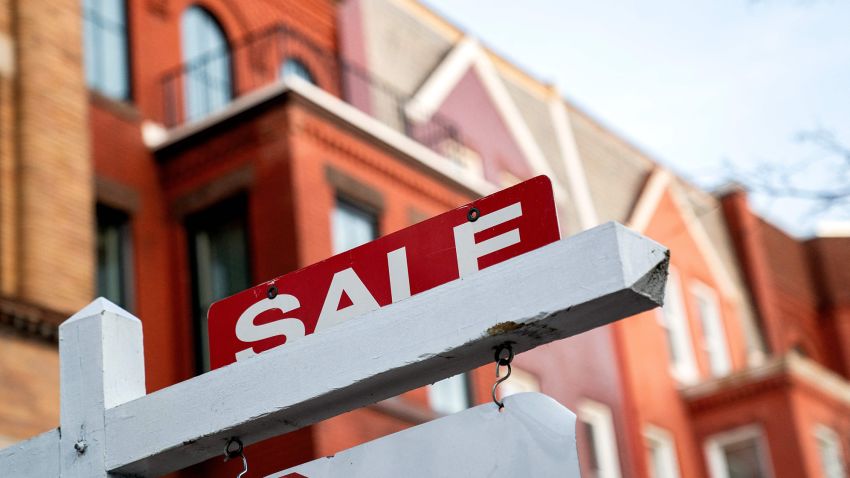
Washington :
Mortgage rates have taken would-be buyers on a ride this year — and it’s only March.
Generally, home buyers can anticipate mortgage rates to move down through the rest of this year as the banking crisis drags on, which could cool down inflation.
But there are bound to be some bumps along the way. Here’s why rates have been bouncing around and where they could end up.
What’s behind the roller coaster ride
After steadily rising last year as a result of the Federal Reserve’s historic campaign to rein in inflation, the average rate for a 30-year fixed-rate mortgage topped out at 7.08% in November, according to Freddie Mac. Then, with economic data suggesting inflation was retreating, the average rate drifted down through January.
But a raft of robust economic reports in February brought concerns that inflation was not cooling as quickly or as much as many had hoped. As a result, after falling to 6.09%, average mortgage rates climbed back up, rising half a percentage point over the month.
Then in March banks began collapsing. That sent rates falling again.
Neither the actions of the Federal Reserve nor the bank failures directly impact mortgage rates. But rates are indirectly impacted by actions that the Fed takes or is expected to take, as well as the health of the broader financial system and any uncertainty that may be percolating.
On Wednesday, the Federal Reserve announced it would raise interest rates by a quarter point as it attempts to fight stubbornly high inflation while taking into account recent risks to financial stability.
While the bank failures made the Fed’s work more complicated, analysts have said that, if contained, the banking meltdown may have actually done some work for the Fed, by bringing down prices without raising interest rates. To that point, the Fed suggested on Wednesday that it may be at the end of its rate hike cycle.
Tighter credit will keep rates higher
Mortgage rates tend to track the yield on 10-year US Treasury bonds, which move based on a combination of anticipation about the Fed’s actions, what the Fed actually does and investors’ reactions. When Treasury yields go up, so do mortgage rates; when they go down, mortgage rates tend to follow.
Following the Fed’s announcement on Wednesday, bond yields — and the mortgage rates that usually follow them — fell.
But the relationship between mortgage rates and Treasurys has weakened slightly in recent weeks, said Orphe Divounguy, senior economist at Zillow.
“The secondary mortgage market may react to speculation that more financial entities may need to sell their long-term investments, like mortgage backed securities, to get more liquidity today,” he said.
Even as Treasurys decline, he said, tighter credit conditions as a result of bank failures will likely limit any dramatic plunging of mortgage rates.
“This could restrict mortgage lenders’ access to funding sources, resulting in higher rates than Treasuries would otherwise indicate,” Divounguy said. “For borrowers, lending standards were already quite strict, and tighter conditions may make it more difficult for some home shoppers to secure funding. In turn, for home sellers, the time it takes to sell could increase as buyers hesitate.”
Longer term, rates are expected to stabilize
Inflation is still quite high, but it is slowing and analysts are anticipating a much slower economy over the next few quarters — which should further bring down inflation. This is good for mortgage borrowers, who can expect to see rates retreating through this year, said Mike Fratantoni, Mortgage Bankers Association senior vice president and chief economist.
“Homebuyers in 2023 have shown themselves to be quite sensitive to any changes in mortgage rates,” Fratantoni said.
The MBA forecasts that mortgage rates are likely to trend down over the course of this year, with the 30-year fixed rate falling to around 5.3% by the end of the year.
“The housing market was the first sector to slow as the result of tighter monetary policy and should be the first to benefit as policymakers slow — and ultimately stop — hiking rates,” said Fratantoni.
In second half of the year, the inflation picture is expected to improve, leading to mortgage rates that are more stable.
“Expectations for slower economic growth or even a recession should bring inflation down and help mortgage rates decline,” said Divounguy.
That’s good news for home buyers since it improves affordability, bringing down the cost to finance a home. It also benefits sellers, since it reduces the intensity of an interest-rate lock-in.
Lower rates could also convince more homeowners to list their home for sale. With the inventory of homes for sale near historic lows, this would add badly needed inventory to an extremely limited pool.
“Mortgage rates are steering both supply and demand in today’s costly environment,” said Divounguy. “Home sales picked up in January when rates were relatively low, then slacked off as they ramped back up.”
But with cooling inflation comes a higher risk of job losses, which is typically bad for the housing market.
“Of course, much uncertainty surrounding the state of inflation and this still-evolving banking turmoil remains,” said Divounguy.
In his remarks on Wednesday, Fed Chair Jerome Powell said estimates of how much the recent banking developments could slow the economy amounted to “guesswork, almost, at this point.”
But regardless of the tack the economy and banking concerns take, their impact will quickly be seen in mortgage rates.
“Evidence — in either direction — of spillovers into the broader economy or accelerating inflation would likely cause another policy shift, which would materialize in mortgage rates,” said Divounguy.
















ليست هناك تعليقات:
إرسال تعليق